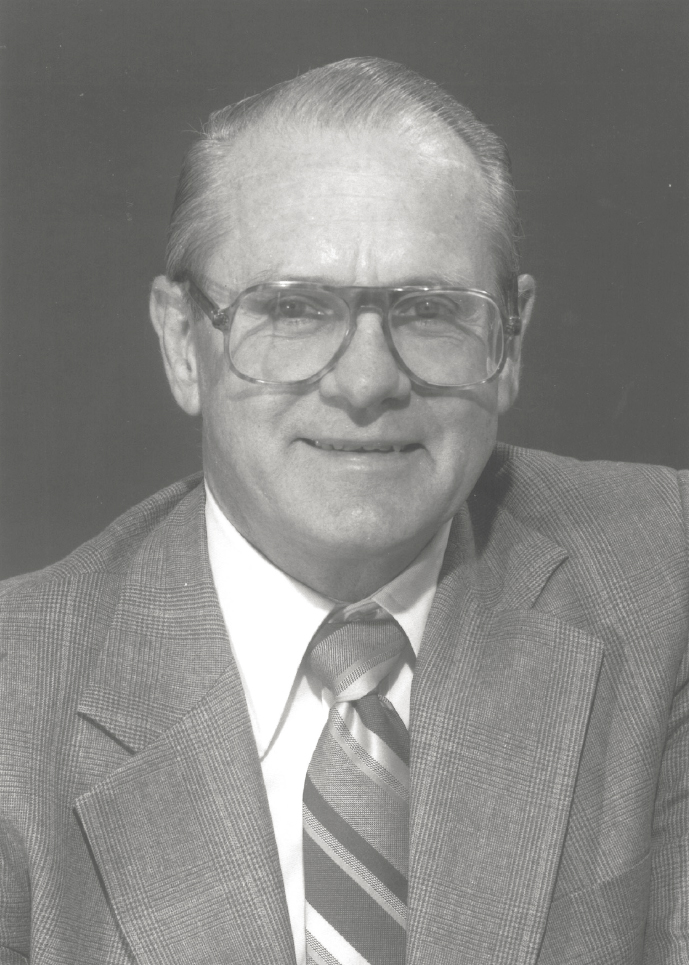
ROBERT C. HAWKINS
1927–2018
Elected in 1985
“For sustained outstanding contributions to engine design and inspired leadership in the development of advanced gas turbine technology.”
BY JAN C. SCHILLING
ROBERT CLEO HAWKINS was elected to the National Academy of Engineering in 1985 for his groundbreaking work and leadership in defining modern military and commercial aircraft engines at General Electric.
Bob was born March 20, 1927, in Bedford, Virginia. He studied mechanical engineering at Virginia Polytechnic Institute and received his bachelor of science magna cum laude in 1950. Upon graduation he went to work for the Allison Engine Company, attaining supervisor responsibilities for aircraft engine turbine thermodynamics and engine performance.
In 1957 he joined the General Electric Aircraft Engine Division, supporting the company’s early military aircraft engines. He was an exceptional engineer and spent his first 5 years at GE as supervisor of preliminary design.
In the early 1960s Bob was part of the leadership team that defined the “core” concept (compressor, combustor, and turbine) designed for a specific airflow, which was used as a foundation for a variety of additions that generated as many as 30 different products. He was the engineering design manager for the core, called GE1, from 1962 to 1967. This core concept engine was critical to the success of the TF39, the industry’s first high-bypass (7:1) engine for Lockheed’s C-5 military
transport aircraft, and the CF6, a commercial engine initially supporting the McDonnell Douglas DC-10.
The GE9, another use of the core family, was configured for the advanced manned strategic aircraft Mach 2 application. This configuration was followed by the F101 for Rockwell’s B1, for which Bob was the engineering manager. This state-of-the-art afterburning turbofan included a tip-shrouded fan, a highly loaded compressor, and a single-stage high turbine, and made use of powdered metal technology and advanced electronic control systems. The F101 core engine was the basis for both military and commercial engines for numerous aircraft. The CFM56 is best known as the commercial utilization on the Boeing 737 and Airbus A320 series aircraft, and the F110 for military use on the F15 and F16 aircraft; a scaled version became the F404 used for the F18 aircraft. These engines were all developed in the 1970s when Bob was manager of GE’s Evendale Engineering Operations. And under his commercial engineering leadership in the late 1970s, the CFM56 engine was developed and the CF6-80 series of high-efficiency engines initiated.
Bob supported the design and production of advanced products throughout his GE career. Drawing on his expertise and leadership, in the early 1980s he became general manager of advanced technology operations.
Under his leadership, two advanced engine designs that were well ahead of their time were initiated. While these engine designs did not make it into production, elements of each appeared in GE products introduced after Bob’s retirement. One of these engines was the military demonstrator XF120 (GE37) for an advanced tactical fighter aircraft. Late in the 1980s it became the YF120 but was never installed because of lack of congressional funding. The other was the unducted fan (UDF) (GE36) designed and tested as part of a joint GE-NASA program. Later a production version was designed for a new Boeing 7J7 aircraft and as a replacement engine on the McDonnell Douglas MD-93/95. The engine had a 30–35 percent fuel burn advantage over conventional low-bypass engines powering existing narrow-body fleets,
but, with low fuel costs at the time, the UDF was never put into production. Nonetheless, associated advances in engine thermodynamics and materials appear in GE products today; for example, graphite epoxy fan blades are now used on all GE and CFM commercial engines.
Bob was a man of the highest personal and professional competence and principles. He was highly respected throughout General Electric, the aeronautical industry, and government agencies. He was active in the American Institute of Aeronautics and Astronautics (AIAA), including as chair, and he cochaired the AIAA/ASME/SAE Joint Propulsion Conference in 1984. He was presented the GE Cordiner Award (named for a former CEO) for his outstanding contributions to engineering for the design and development of the GE1 engine. He also received the GE Aircraft Engine Division award for technical contributions to the F110 engine, and in 1991 was inducted into the GE Aviation Propulsion Hall of Fame for his work advancing propulsion across several GE programs.
Bob was a great listener and always made recommendations based on sound engineering principles. He drove his engineering teams hard but always sought to support them with the best tools. He led developments in materials technology and technical computerization. GE engine products since his retirement have been built on the solid foundation that he influenced so greatly.
He was 91 years old when he passed away on December 28, 2018. His wife of more than 70 years, Dorothy (née Russell), died October 21, 2019.




